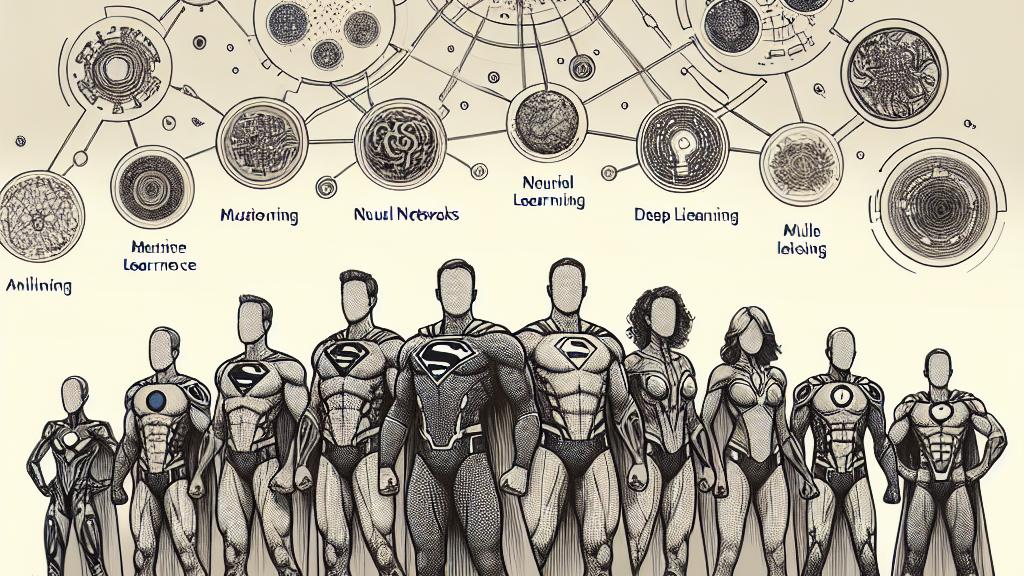Future of AI: Embracing a Multi-Model Approach
Overview
- AI competition could result in a diverse ecosystem of multiple specialized models rather than a single, dominant entity.
- Diverse AI models will enhance both efficiency and innovation across various fields.
- Effective routing strategies will harness individual model strengths, creating superior outcomes.

The Multi-Model Prediction
In the ever-evolving arena of artificial intelligence in the United States, excitement surrounds a bold prediction: instead of a single, all-powerful AI model claiming victory, we may soon thrive in a diverse landscape of specialized models. Imagine a superhero ensemble, where each character brings unique powers to the table, enhancing the overall strength of the team. This dynamic vision is championed by Zachary Cuss, a former executive at OpenAI, who asserts that a 'multi-model' ecosystem will empower users to choose tailored solutions that perfectly meet their needs. Embracing this collaborative spirit promises not only improved outcomes but also a richer, more nuanced user experience.
Specialization and Efficiency
Cuss points out that this movement towards specialization is not merely a passing trend; it’s a fundamental shift in our approach to AI. Consider professional athletes, each excelling in their respective disciplines—just as they leverage unique skills for maximum effectiveness, AI models will focus on their core competencies. For instance, one model could shine in natural language processing—crafting human-like conversations—while another excels in image recognition, accurately identifying objects in real time. This specialization empowers users to harness expert-level insights tailored to their unique challenges, leading to remarkable efficiency. By allowing each model to zoom in on its areas of expertise, we not only enhance performance but also cultivate a more satisfying experience for all.
The Role of Routing Strategies
Now, let’s dive into an incredibly exciting aspect of this multi-model future: routing. Envision routing as your intelligent personal assistant—one that instinctively knows which AI model to consult for various tasks. As AI technology continues to advance, the need for effective routing will become increasingly vital. Picture an organization analyzing massive datasets; it could deploy one model for real-time analytics and another for deeper trend analysis. This strategic allocation enhances collaboration and precision while ensuring high-quality results that cater to diverse user needs, seamlessly blending efficiency with efficacy.
Advantages of Fragmentation
Cuss aptly refers to this emerging trend as 'fragmentation.' But why is this fragmentation something to celebrate? Instead of relying on a single, omnipotent AI model, a tapestry of specialized systems will invigorate creativity and spark innovation. Imagine a world where one model tackles healthcare diagnostics while another addresses climate change through advanced modeling techniques. Such compatibility transforms competition into synergy, where different models can coexist and complement one another, addressing complex challenges in unison. This network of interconnected models not only boosts precision but also builds a resilient framework adept at navigating the myriad hurdles we face.
Conclusion: A Bright Future for Multi-Model AI
In conclusion, Zachary Cuss paints a wonderfully optimistic picture for the future of AI. Just as monumental inventions throughout history, from the telephone to the internet, have flourished through collaboration rather than singular control, so too should we embrace an AI landscape rich in diversity and specialization. This vision isn’t only about technological evolution; it’s about fostering inclusivity, driving innovation, and empowering individuals across various domains. As we embark on this thrilling journey, we can look forward to a future where multiple AI models harmoniously collaborate, elevating our experiences and addressing pressing societal needs in ways we can hardly imagine today.

Loading...